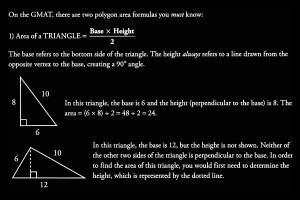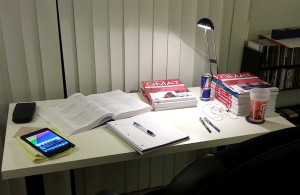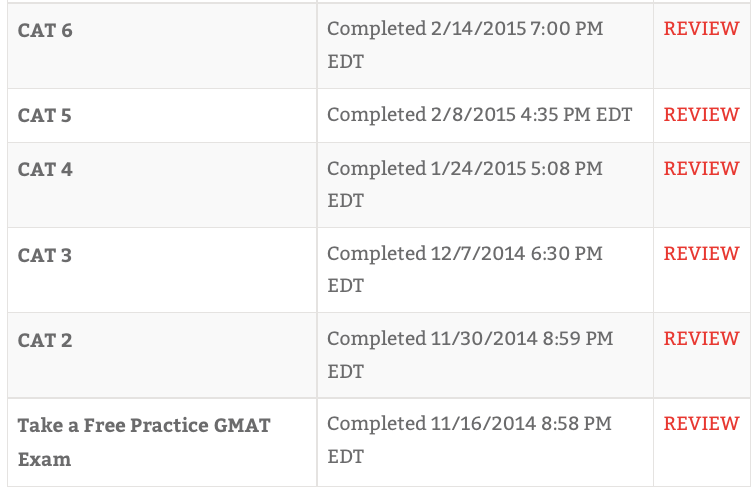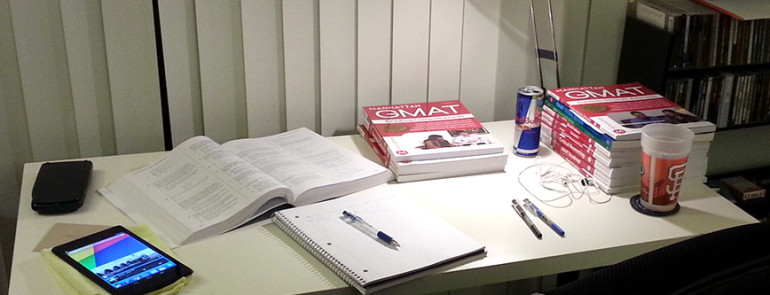The GMAT is the biggest point of worry for most aspiring applicants, and with good reason. It’s another standardized test when most of us were ready to be done with them forever, having suffered through them since elementary school. It’s more complex than the SAT, and in my opinion harder than the GRE (granted, I took the GRE in 2008, two large revisions and scoring systems ago), especially for quant. It’s getting increasingly more competitive as well, with a 700+ score no longer being your champion stat to get you into the top 20.
In The Beginning
I started studying for the GMAT in 2013 as a “if you’re doing it, hell I’ll do it too” with another friend. We were both considering b-school, albeit for different paths given that I am an engineer and he was at the time a federal agent for the IRS (you know who you are). I picked up the 2013 Official Guide, or the OG as Manhattan GMAT likes to refer to it, and took the diagnostic test in the first chapter cold-turkey. I found that, 5 years past my GRE, I was absolutely terrible at quant; this was incredibly dismaying considering I was an engineer sitting on an MS in solid-state electronics, with my favorite grad class having been quantum mechanics. But the GMAT thinks differently, challenges you far more than “I know one way to solve it,” and forces you to problem-solve at a pace only the most frantic, high-stakes day trader could probably fathom. And on completely useless math properties that, regardless of how much math you know, really boil down to how quickly you can recognize patterns.
GMAT At Its Core
 Patterns is all it is. That’s why you have people that are just naturally good at standardized tests; they can recognize the patterns that the GMAC uses to build these questions. Once you begin to recognize the patterns in these questions, you can couple that with knowledge of the basic GMAT math principles, time-saving strategies and most importantly your ability to rationalize when you should say “eff it” and move on to the next question, and keep pushing.
Patterns is all it is. That’s why you have people that are just naturally good at standardized tests; they can recognize the patterns that the GMAC uses to build these questions. Once you begin to recognize the patterns in these questions, you can couple that with knowledge of the basic GMAT math principles, time-saving strategies and most importantly your ability to rationalize when you should say “eff it” and move on to the next question, and keep pushing.
Of course, that only covers quant. You’ll notice a quant-heavy focus on this series, because that’s what I really had to work on for this test; oddly, verbal was far easier for me, probably because GMAT verbal is very logic- and rule-based analysis. But this blog isn’t meant to give you foolproof GMAT strategies for specific problems, or present the best way to score 790 or anything like that, because there are hundreds of better sites and resources for that, like peer sites such as GMAT Club and prep resources / courses like Manhattan GMAT. I’ll just lay out here what I did to get through the process successfully, with small tips along the way.
For starters, I took the test twice. I scored a 640 the first time and I was crushed. But two months later I jumped back into a Pearson VUE cubicle and hammered out a 710. So if you’re looking for an uplifting story to help calm your nerves after a bad first-take or initial diagnostic/mock/CAT test, you’re in the right place!
The Resources
 So, back to my story. After studying a few months in 2013 using the OG book and a full set of Manhattan GMAT books, I got a new job and moved from LA to SF, putting my test aspirations on hold. I hadn’t truly dedicated myself, putting in maybe 4-5 hours per week after work, making my way through the Manhattan book strategies and taking a diagnostic at the end placing me at ~650. While this wasn’t what I wanted, I also was half-assing it and this period really just served to introduce me to the structure of the test, the types of questions and material I needed to know.
So, back to my story. After studying a few months in 2013 using the OG book and a full set of Manhattan GMAT books, I got a new job and moved from LA to SF, putting my test aspirations on hold. I hadn’t truly dedicated myself, putting in maybe 4-5 hours per week after work, making my way through the Manhattan book strategies and taking a diagnostic at the end placing me at ~650. While this wasn’t what I wanted, I also was half-assing it and this period really just served to introduce me to the structure of the test, the types of questions and material I needed to know.
A year later, I started hitting a turning point at work and decided I was still going to go through with my b-school plans. I picked up my Manhattan books again. Based on their strategies and feedback from others, I was convinced the Manhattan resources were going to be my route. And then I got incredibly lucky. A co-worker at my old job had taken the full in-class Manhattan GMAT course, and her membership was still active for the online portal, which included three great resources:
1. Online CAT tests
2. Video recordings of each course in their 9-week course
3. The GMAT Navigator tool companion for the OG book
It’s at this point where I can’t say you can do it all for free. I set out from the start to be as low-cost as possible, and I very luckily (but definitely not kosherly) had free access to otherwise paid resources. However, of those 3 items, you can really do #1 and #2 without the course.

The first one is the Online CAT tests, which were absolutely crucial to fine-tuning my study strategy, ESPECIALLY after my first unsuccessful go-around with the GMAT. I’ll cover more how to utilize these tests to their full advantage in Part 2. You get access to these with the purchase of ANY one Manhattan GMAT book. If you buy the full set, you have 9 codes, which you can give to your friends if you’re particularly generous and like to pay-it-forward, a key trait for b-school anyway. For #2, the reality is that everything in the video lectures is more or less contained within the Manhattan GMAT books, but requires a bit more diligence and dedication to understand, maximize and stick in your head. If money is not an issue for you, I highly recommend the Manhattan GMAT course (or do what I did and luck into someone else’s still-active account, but no, don’t do that, because that’s against their rules). Otherwise, you’ll still be OK.
Pause
This is getting long, so I’ll cut it here. In the next post (Part 2), I’ll touch on how I applied the use of the resources above and other strategies to study effectively. Work hard!

